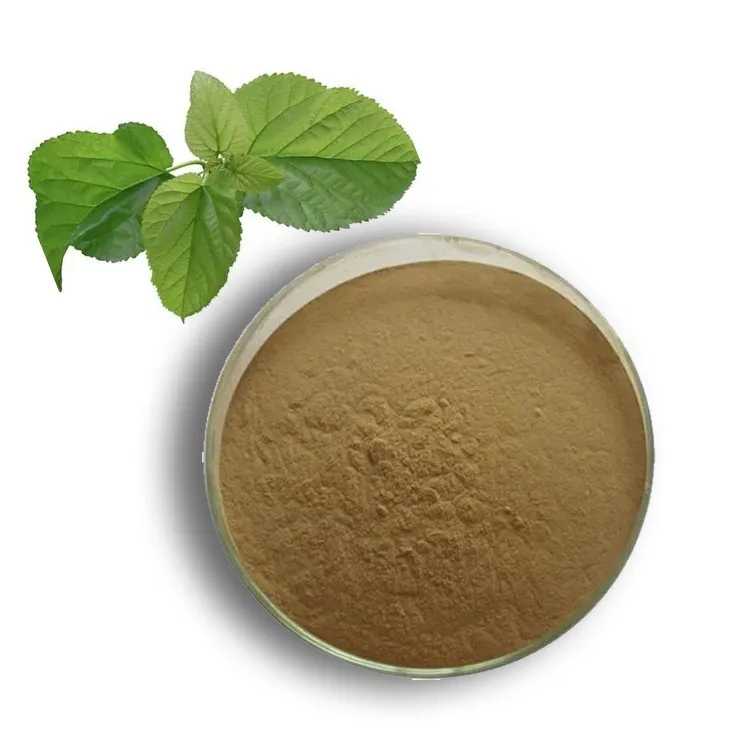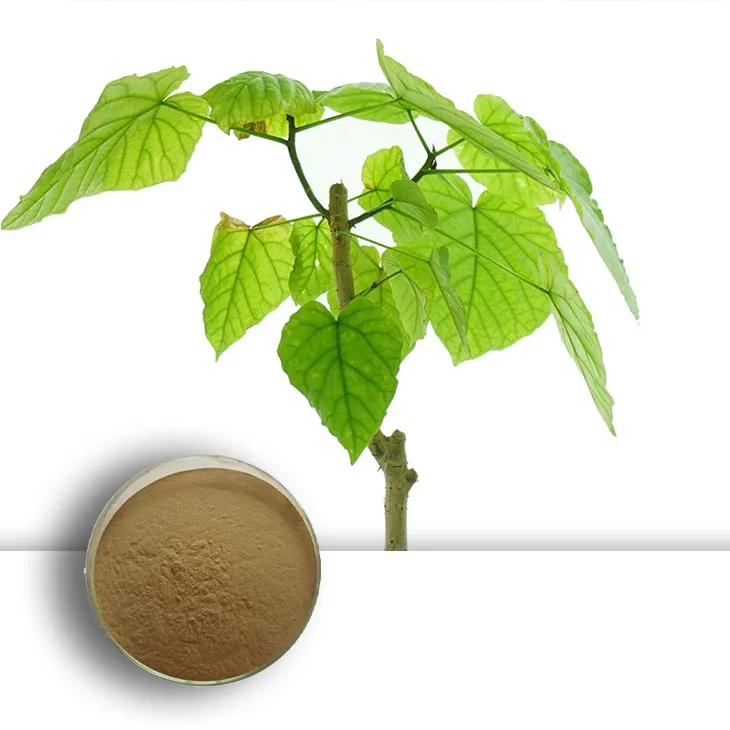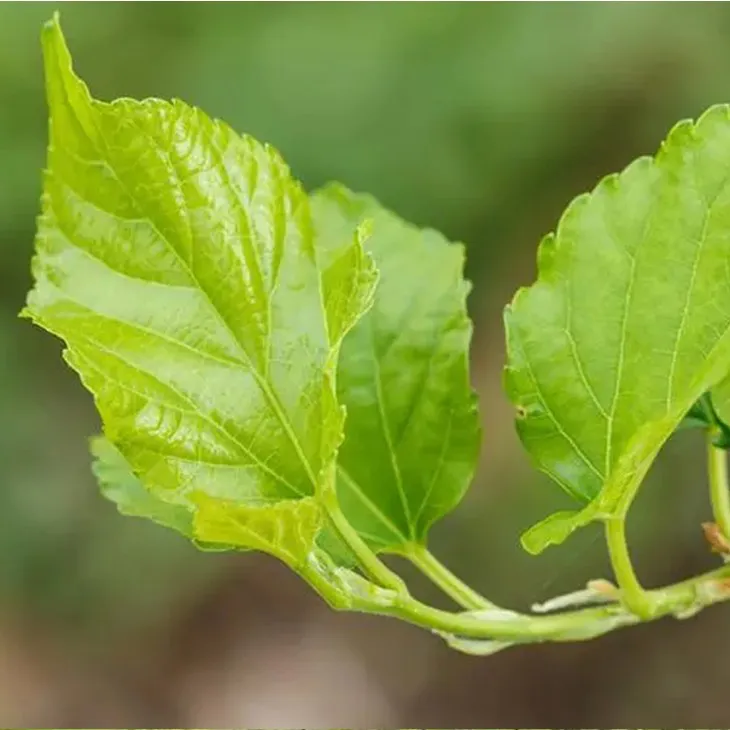- 0086-571-85302990
- sales@greenskybio.com
Mulberry leaf extract can reduce high blood pressure.
2024-11-11

Introduction
Hypertension, also known as high blood pressure, is a global health concern. It affects a large number of people around the world and is a major risk factor for various cardiovascular diseases such as heart attacks, strokes, and heart failure. Conventional treatments for hypertension often involve the use of medications, but there is also growing interest in natural remedies. Mulberry leaf Extract is one such natural product that has shown potential in reducing high blood pressure.

The Composition of Mulberry leaf Extract
Mulberry leaves are rich in various bioactive compounds. One of the important groups of compounds in Mulberry leaf Extract is flavonoids. Flavonoids are known for their antioxidant properties and their ability to interact with biological systems in the body. In the context of blood pressure regulation, these flavonoids play a crucial role. Other components in the extract may also contribute to its potential blood - pressure - reducing effects, although further research is needed to fully understand their individual and combined contributions.

Mechanisms of Action
Relaxing Blood Vessels
One of the main ways in which mulberry leaf extract may reduce blood pressure is by relaxing blood vessels. The flavonoids in the extract can interact with the smooth muscle cells in the walls of blood vessels. They can stimulate the production of nitric oxide (NO), which is a signaling molecule that causes the smooth muscle cells to relax. When blood vessels relax, their diameter increases, which leads to a decrease in blood pressure. This is similar to the mechanism of action of some medications used to treat hypertension, such as calcium channel blockers.
Influencing Hormonal Systems
The extract may also influence hormonal systems involved in blood pressure regulation. For example, it may affect the renin - angiotensin - aldosterone system (RAAS). The RAAS is a complex hormonal system that plays a key role in regulating blood pressure. By interfering with this system, mulberry leaf extract may be able to modulate blood pressure levels. However, the exact mechanisms by which it interacts with the RAAS are not yet fully understood and require further investigation.

Evidence from Animal Experiments
Animal experiments have provided some evidence for the blood - pressure - reducing effects of mulberry leaf extract. In hypertensive animal models, treatment with the extract has been shown to lead to a significant decrease in blood pressure. For example, in rats with experimentally - induced hypertension, mulberry leaf extract administration resulted in lower systolic and diastolic blood pressure values compared to control animals. These results suggest that the extract has potential as a treatment for hypertension, at least in the context of animal models.
However, it is important to note that animal models may not always accurately reflect the situation in humans. There may be differences in physiology, metabolism, and disease mechanisms between animals and humans. Therefore, while the results from animal experiments are encouraging, they need to be confirmed in human studies.
Clinical Research on Mulberry Leaf Extract and Hypertension
Some clinical research has also been conducted to investigate the effects of mulberry leaf extract on hypertension in humans. In small - scale clinical trials, the extract has shown some positive results. For instance, in a study involving a group of hypertensive patients, those who received mulberry leaf extract supplementation had a modest but significant reduction in blood pressure over a certain period of time compared to those who received a placebo.
Nevertheless, these clinical studies also have their limitations. The sample sizes in many of these studies are relatively small, which may limit the statistical power of the results. Additionally, the duration of the studies is often short, and long - term effects of mulberry leaf extract on blood pressure are not well - understood. More large - scale, long - term clinical trials are needed to provide more conclusive evidence regarding the efficacy of mulberry leaf extract in treating hypertension.
Challenges in Using Mulberry Leaf Extract for Hypertension Management
Identifying Key Components Precisely
One of the major challenges in using mulberry leaf extract for hypertension management is precisely identifying the key components responsible for its blood - pressure - reducing effects. As mentioned earlier, the extract contains multiple bioactive compounds, and it is not yet clear which of these compounds are the most important in terms of blood pressure regulation. This makes it difficult to develop standardized and optimized extracts for therapeutic use. Without a clear understanding of the key components, it is also challenging to ensure the consistency and quality of the extract in different batches.
Standardizing Production
Another challenge is standardizing the production of mulberry leaf extract. The quality and composition of the extract can be influenced by various factors such as the variety of mulberry trees used, the harvesting time, and the extraction methods. Variations in these factors can lead to differences in the bioactive compound content and the effectiveness of the extract. To ensure that mulberry leaf extract can be widely used in hypertension management, it is necessary to develop standardized production protocols that can produce consistent and high - quality extracts.
Conclusion
Mulberry leaf extract shows promise as a natural remedy for hypertension. Its potential to reduce blood pressure through mechanisms such as relaxing blood vessels and influencing hormonal systems has been demonstrated in both animal experiments and some clinical research. However, there are still significant challenges to overcome, including precisely identifying the key components and standardizing production. Future research should focus on addressing these challenges to fully realize the potential of mulberry leaf extract in the management of hypertension.
FAQ:
1. How does mulberry leaf extract reduce high blood pressure?
The extract contains ingredients like flavonoids. These components can reduce blood pressure through multiple pathways. For example, they can relax blood vessels, which helps to lower the resistance in the blood vessels and thus reduce blood pressure. Also, they can influence hormonal systems, which may also contribute to the regulation of blood pressure.
2. What evidence supports that mulberry leaf extract can reduce high blood pressure?
There have been animal experiments on hypertensive models. In these experiments, the use of mulberry leaf extract has shown positive effects on reducing blood pressure. Moreover, some clinical research has also provided evidence that it may be beneficial for reducing high blood pressure.
3. Are there any limitations in using mulberry leaf extract for high blood pressure?
Yes, there are. One of the main issues is precisely identifying the key components in the extract that are responsible for reducing blood pressure. Another limitation is the need to standardize production. Without standardization, it is difficult to ensure the consistent effectiveness of the extract in hypertension management, which may limit its wider use.
4. Can mulberry leaf extract completely replace traditional hypertension medications?
At present, it is not likely. While mulberry leaf extract shows potential in reducing blood pressure, traditional hypertension medications have been extensively studied and proven effective in a wide range of cases. Mulberry leaf extract may be used as a complementary or alternative treatment in some cases, but more research is needed before it can be considered a complete replacement.
5. How should mulberry leaf extract be taken for high blood pressure?
Currently, there is no standardized dosage or method of taking mulberry leaf extract for high blood pressure. Due to the lack of clear guidelines, it is important to consult a healthcare professional before starting to take it. They can provide advice based on individual health conditions and other factors.
Related literature
- The Effects of Mulberry Leaf Extract on Blood Pressure Regulation: A Review"
- "Flavonoids in Mulberry Leaf Extract and Their Impact on Hypertension"
- "Mulberry Leaf Extract: A Promising Natural Agent for Hypertension Management"
- ▶ Hesperidin
- ▶ citrus bioflavonoids
- ▶ plant extract
- ▶ lycopene
- ▶ Diosmin
- ▶ Grape seed extract
- ▶ Sea buckthorn Juice Powder
- ▶ Beetroot powder
- ▶ Hops Extract
- ▶ Artichoke Extract
- ▶ Reishi mushroom extract
- ▶ Astaxanthin
- ▶ Green Tea Extract
- ▶ Curcumin Extract
- ▶ Horse Chestnut Extract
- ▶ Other Problems
- ▶ Boswellia Serrata Extract
- ▶ Resveratrol Extract
- ▶ Marigold Extract
- ▶ Grape Leaf Extract
- ▶ blog3
- ▶ blog4
- ▶ blog5
-
Organic Tongkat Ali extract powder factory.
2024-11-11
-
How to make powder with ashwagandha extract.
2024-11-11
-
Rosehip extract manufacturers from China.
2024-11-11
-
The best cat's claw extract in nature.
2024-11-11
-
Chinese Dandelion Leaf Extract Suppliers.
2024-11-11
-
Uridine-5'-monophosphate Disodium salt
2024-11-11
-
Pueraria Lobata Extract
2024-11-11
-
Grape Leaf Extract
2024-11-11
-
Nettle leaf extract
2024-11-11
-
Acai Berry Extract
2024-11-11
-
Sea buckthorn Juice Powder
2024-11-11
-
Hesperidin
2024-11-11
-
Lemon Balm Extract
2024-11-11
-
Mango flavored powder
2024-11-11
-
Sugarcane Extract
2024-11-11





















